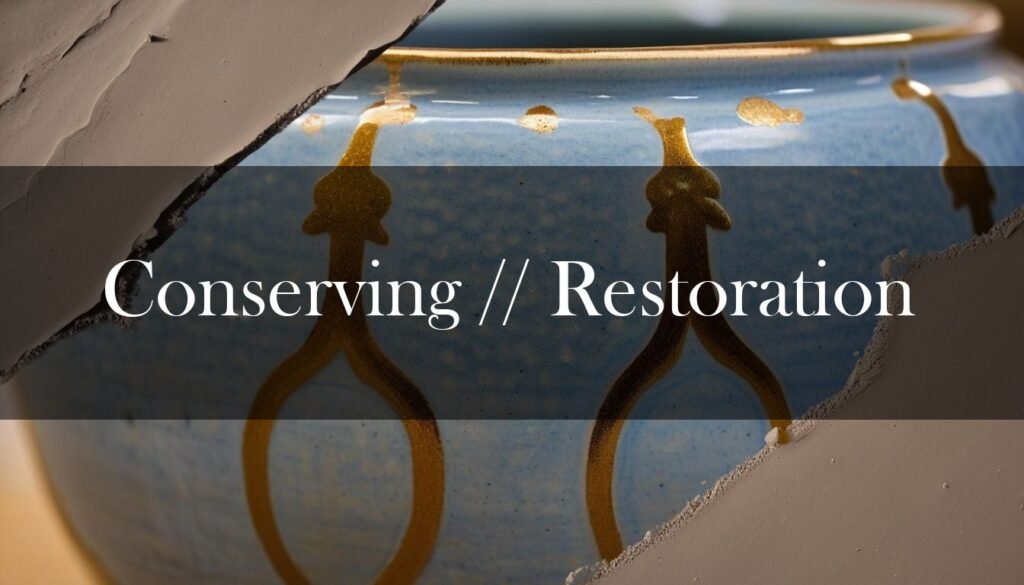Ceramic conservation and restoration is a delicate dance between art, science, and ethics, aiming to preserve these fragile pieces of history and artistry for future generations. Whether unearthed from an archaeological dig or a cherished art piece, ceramics often bear the marks of time and mishaps, each telling a story of its own. Understanding how to address these damages is essential for anyone involved with these objects, from the hobbyist collector to the professional conservator.
One of the first steps in ceramic restoration is identifying the types of damage present. Ceramics, despite their strength, are vulnerable to a variety of issues. Cracks and breaks are common, often resulting from impact or stress, as “breaks, losses, or abrasions can be caused by improper handling, impact (dropping), or excavation”.
Chips and abrasions can occur from frequent handling, while glaze defects like crazing—a network of fine cracks—arise from mismatches in thermal expansion. Other glaze issues include shivering, where the glaze peels off due to excessive compression, and crawling, which leaves bare patches on the surface. Environmental factors also play a significant role; soluble salts from burial in salty soils can cause surface flaking, and frost can lead to cracking from water expansion within the ceramic’s pores. Even seemingly minor issues like metal marking from utensils or pinholes in the glaze can detract from the object’s integrity.
Ethical considerations are paramount in ceramic restoration. The principles of reversibility, minimal intervention, and respect for the original artifact guide every decision. Reversibility ensures that any restoration work can be undone without harming the artifact, accommodating future advancements in conservation techniques. Minimal intervention dictates that only the necessary amount of restoration is performed to stabilize the object, preserving its authenticity. Respect for the original artifact means maintaining its historical and aesthetic integrity, avoiding speculative additions or alterations. You can read more about maintaining your pieces with this article.
The materials used in ceramic restoration are carefully selected for their stability and compatibility. Adhesives, fillers, and consolidants each serve a specific purpose. Traditional adhesives like animal glue are easily reversible but offer weaker bonds, while modern epoxy resins provide stronger, more durable repairs. Fillers, such as plaster of Paris or wax-resin mixtures, are used to replace missing material, matching the density and appearance of the original ceramic. Consolidants strengthen the ceramic fabric by binding it together, using materials like silanes and methyl methacrylates. Techniques for crack repair range from using epoxy adhesives like PC-11 for their strength and workability to super glues for small chips. Kintsugi, the Japanese art of repairing with gold, offers a unique approach by celebrating the object’s history of breakage. For more information on surface design, this article will help.
The principles of reversibility, minimal intervention, and respect for the original artifact guide every decision.
The approach to restoration differs significantly between archaeological and art ceramics. For archaeological finds, the primary goal is to stabilize and preserve historical integrity with minimal aesthetic intervention. Techniques favor non-invasive methods, preserving the artifact’s authenticity. In contrast, art ceramics restoration often aims to restore the object’s original visual state, using more invasive techniques to achieve aesthetic continuity. Methods like Kintsugi add artistic value while acknowledging the object’s imperfections. Whether dealing with a shard of ancient pottery or a beloved art piece, the principles of ceramic conservation guide the process, ensuring these objects continue to inspire and inform for years to come.





